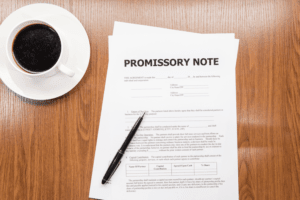
This means the interest of ownership is less than 50% of the total outstanding shares while having no direct control over the decision of the subsidiary. You might be wondering how the equity statement is different from the balance sheet. Shareholder’s equity is one of the financial metrics that analysts use to measure the financial health of a company and determine a firm’s valuation.

Business Finances
In this case, the business owner or manager may need to improve the company’s financial performance, such as by reducing expenses or seeking additional financing. A company’s financial performance, changes in the value of its assets, and changes in its https://www.bookstime.com/ ownership structure are just a few of the variables that can affect equity. At the beginning of the year, John’s capital balance in the business was $100,000. During the year, the business earned a net income of $40,000 and incurred a loss of $20,000. John also contributed an additional $10,000 to the business and made a draw of $5,000 for personal expenses.
- The number of outstanding shares is taken into account when assessing the value of shareholder’s equity.
- The balance sheet consists of the finishing balances of owner’s equity, but it doesn’t help in deciding the causes behind such occurrence of chances within the owner’s equity accounts.
- It can be said the company has good prospects and is valued high among investors who agreed to invest $10,000 in the company.
- Further, profits, dividends, and owner withdrawals are just a few of the elements that might affect owner’s equity, and they must all be disclosed on an owner’s equity statement.
- The statement was created to clearly show a company’s financial position, including any owner contributions, profits, and losses.
- On the other hand, negative equity could imply impending insolvency or an inability to pay bills.
Harnessing Financial Mechanisms For Seamless Business Acquisition
So don’t let reporting on your equity be an obstacle – simply access the templates and examples provided to craft polished statements that provide data-backed insights into your business’s performance. Keeping an eye on owner’s equity empowers you to make smart financial decisions. A statement of owner’s equity should be prepared as often as needed to provide timely and relevant financial information for decision-making. Common practice is to prepare it annually, aligning with the fiscal year-end. However, for more dynamic insight or in times of significant changes in ownership structure, preparing it quarterly might be advantageous. At first blush, the equity on a balance sheet and the owner’s equity statement may look like they’re playing the same tune, but in essence, they perform a duet with crucial differences.
Elements of the Financial Statements
With a sole proprietorship, the owner’s total investment in the business and the business’s net earnings add to the owner’s equity. Subtracted from this are any personal withdrawals made by the owner and any outstanding business debts. If a business earns a profit, this amount gets added to the equity, indicating the growth in the owner’s claim on the petty cash company’s assets. This total provides a snapshot of the owner’s claim on the business assets at the close of the reporting period. Begin your statement by listing the starting balance of owner’s equity at the start of the reporting period.

Recall from the discussion on materiality that $1,000, for example, is more material to a small business (like an independent local movie theater) than it is to a large business (like a movie theater chain). Using percentages or ratios allows financial statement users to more easily compare small and large businesses. Below is an overview of what business owners should know about statements of owner’s equity, including what they contain, how they’re used and how to write one. The net income figure contained on this statement comes from the Income Statement and the ending capital balance is used in the owner’s equity section of the Balance Sheet. The book value of owner’s equity might be one of the factors that go into calculating the market value of a business.

The Waste Book: The Oldest Book in Accounting

It’s also the total assets of $117,500 minus total liabilities of $22,500. The total change in net worth is added to the beginning net worth to come up with the ending net worth. This figure either contributes to or has a negative effect on net worth depending on the market valuation changes and the resulting deferred tax liability change. The following statement of changes in equity is a very brief example prepared in accordance with IFRS. It does not show all possible kinds of items, but it shows the most usual ones for a company.
By tracking these movements, stakeholders gain insights into the health and trajectory of an enterprise beyond what static snapshots of assets and liabilities can provide. Remember from earlier lessons that current assets and current liabilities are often amounts that are settled in one year or less. Working capital, which is current assets minus current liabilities, is used to calculate the dollar amount of total assets a business has that can be used to meet its short-term liabilities. Our table specifically details what changes contributed to our hypothetical company’s owner’s equity account increasing from $26 million to $42 million.
- These are the inflows to the business, and because the inflows relate to the primary purpose of the business (making and selling popcorn), we classify those items as Revenues, Sales, or Fees Earned.
- That is, the current ratio is defined as current assets/current liabilities.
- The statement of owner’s equity can be traced back to the early days of accounting, when businesses needed a way to track their financial position accurately.
- Utilitarianism suggests that an ethical action is one whose consequence achieves the greatest good for the greatest number of people.
- Coverage here is somewhat basic since these topics are accorded much greater detail in future chapters.

Obviously, the first year a business is started, it will not statement of stockholders equity have a beginning balance. Compute for the balance of the capital account at the end of the period and draw the lines. One horizontal line means that a mathematical operation has been performed. You can easily find it in the adjusted trial balance as “Owner, Drawings”, “Owner, Withdrawals”, or any other appropriate account.